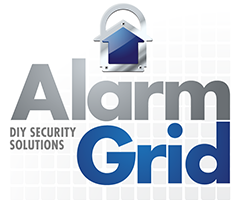Security Fobs

Security fobs make for a nice addition to nearly any alarm system. These are remote control devices that you can use to conveniently interact with your alarm system whenever it is needed. Just grab your security key fob out of your pocket or purse and press the desired input. Many four button key fobs will have inputs for Arming Away, Arming Stay, Disarming, and triggering a panic. The last input is often an auxiliary button, and you can program it how you want. The most common use is to set the button up as a panic, but you might also have it activate a relay, trigger a smart scene, or perform some other function. It really is all up to you when you program your own security system.
Remember that security key fobs are not the only way for you to control your security system without being directly in front of the panel. You might also do this using your smartphone and accessing an interactive service platform like Total Connect 2.0 or Alarm..com. Both of these services will allow you too conveniently arm and disarm your system from anywhere. And you can do so much more from Total Connect 2.0 or Alarm.com than you can from a key fob. As a result, many users find security fobs to be an unnecessary addition to an alarm system. But many users prefer them, as they represent a physical device that you can actually hold in your hand and use to operate your system.
When choosing a security fob, you want to make sure that the device works with your alarm system. This is determined by the frequency at which the key fob transmits. You must get a key fob that works at a frequency that is compatible with your system's wireless receiver. Nearly every system has some key fob designed specifically for use with that particular panel. There are even some key fobs that will work across multiple panels. And if the key fob is uni-directional, you can usually enroll it with multiple panels if you want. This is great for users who have multiple systems in different locations and want to be able to control them with the same key fob device. But remember that a uni-directional key fob will not utilize encryption. There may be encrypted key fobs available for your system that offer better protection.
Remember that key fobs are typically programmed into special key fob zones. Depending on the system, you may be able to program individual inputs to standard zones as well. Just remember that doing this will eat up one of your zone slots on your system. And also consider that each input will need its own zone. Depending on the key fob, it may also be possible to achieve more functions using dual-button presses. In other words, pressing two buttons at the same time will trigger a different command than if you just press one single button. Some key fobs will require you to press and hold any given input in order for the command to go through. This is done to prevent false alarms that may be triggered by mistake due to an accidental button press.











